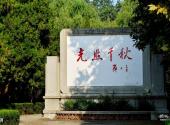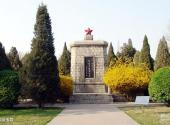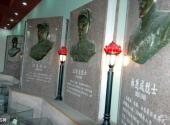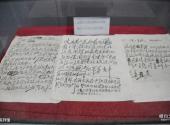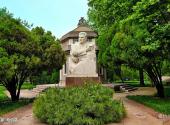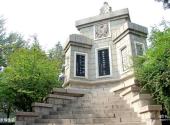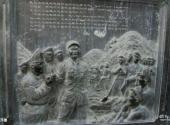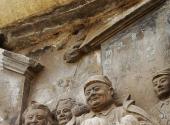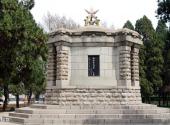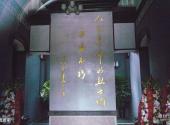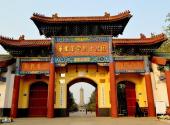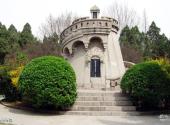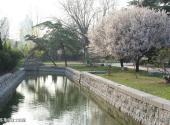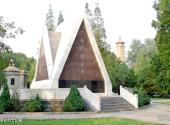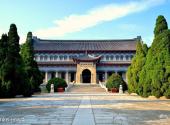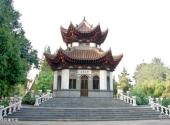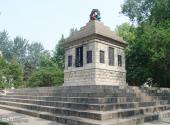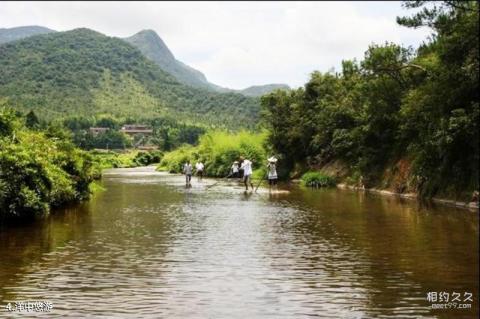
Scenic spot introduction:
Linyi East China Revolutionary Martyrs Cemetery was built to commemorate the revolutionary martyrs of East China who died in the Anti-Japanese War and the War of Liberation. It is the largest revolutionary martyrs cemetery in East China. This is a large-scale revolutionary commemorative garden, with rivers and mountains inside and outside, and magnificent scenery. It is a famous place of scenic beauty. In the garden, thousands of trees are blooming, hundreds of flowers are blooming, and 18 large-scale memorial buildings such as towers, halls, pavilions, pavilions, tombs, and corridors are looming in the park. They are majestic and solemn.The Yimeng Mountain area with Linyi as the center has a glorious revolutionary tradition. During the Anti-Japanese War, the Shandong Branch of the Central Committee of the Communist Party of China, the Shandong Column of the Eighth Route Army, the 115th Division and the command organs of the First Column of the Eighth Route Army were all stationed here. During the eight years of the Anti-Japanese War, the Shandong Party, Government and Military Headquarters led Shandong's military and civilians in 26,000 battles here, wiping out more than 500,000 enemies. During the War of Liberation, battles such as Subei, Lunan, Laiwu, Menglianggu, Jinan, and Huaihai were fought. In many revolutionary struggles, countless outstanding Chinese sons and daughters died heroically on this heroic land. In order to commemorate their achievements and carry forward their great righteousness, in February 1949, as proposed by the East China Bureau, the Shandong Provincial People's Government decided to build a large-scale martyrs cemetery in Linyi. The foundation stone was laid in April, and the main projects were completed in 1950. Since then, repairs and additions have been carried out one after another, and it has been listed as the first batch of key protected units for martyrs' memorial buildings in the country and a key cultural relics protected unit in the province.
Attractions distribution:
The East China Revolutionary Martyrs Cemetery is located at No. 4, Cemetery Front Street, facing south and covering an area of 192,000 square meters. The cemetery is centered on the Revolutionary Martyrs Memorial Tower and the Revolutionary Martyrs Memorial Hall, with a south gate archway. On the east side are the Zhanrong Sigong Pavilion, Hans Heber's Tomb, Chen Ming and Xin Rui's Tomb, Luo Binghui's Tomb, and Wang Lushui's Tomb. , on the west side are Yangfeng Chengzhi Pavilion, Revolutionary Martyrs Cemetery, Chang Enduo Tomb, Liu Yan Tomb, and Zhang Yuanshou Tomb. In the palace-style Revolutionary Martyrs Memorial Hall, there are reliefs showing the martyrs' deeds and stone tablets engraved with the names of 62,576 martyrs. Next to it are the Revolutionary Martyrs' Deeds Exhibition Hall and the Revolutionary War History Exhibition Hall. There are also inscriptions by party and state leaders such as Mao Zedong, Zhou Enlai, Liu Shaoqi, Zhu De, Ren Bishi, Dong Biwu, Liu Bocheng, Chen Yi and Luo Rongheng in the cemetery.Scenic spot qualifications:
National 3A-level scenic spot, patriotic education base, provincial key cultural relics protection unitScenic spot features:
Visit, study, pay respects, history and culture, cemeteries, memorial hallsScenic spot map:
Scenic spot map
Attraction Address
Travel Guide
Best time to visit:
All seasons
Scenic spot map:
Scenic spot map
Tourist Transportation
Scenic spot location:
China > Shandong Province > Linyi City > Lanshan District
How to get there:
Bus route: Take West Line No. 9, No. 18, or No. 201 and get off at Martyrs Cemetery Station.
Self-driving route: Take Yinqueshan Road and Jinqueshan Road in the city and turn into Yizhou Road to Lingyuan Front Street.
Scenic area map:
Click to expand the scenic area map
Attraction Tickets
East China Revolutionary Martyrs Cemetery ticket price:
Cemetery: Free
Memorial Hall: Visit the museum with valid ID
Scenic area opening hours:
Cemetery: 08:30-17:30 (spring and summer), 08:30-17:00 (autumn and winter)
Memorial Hall: 09:00-11:30, 14:00-17:00; 16: Admission is closed at 30, and the museum is closed on Mondays (open normally on national statutory holidays)

